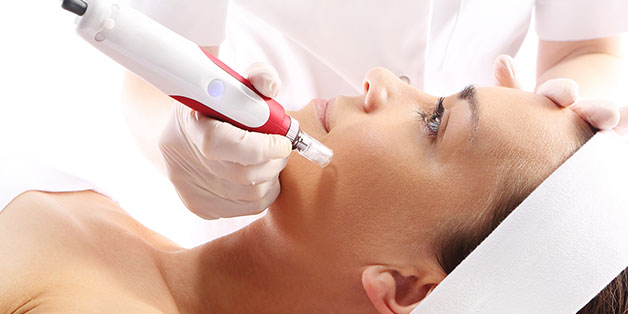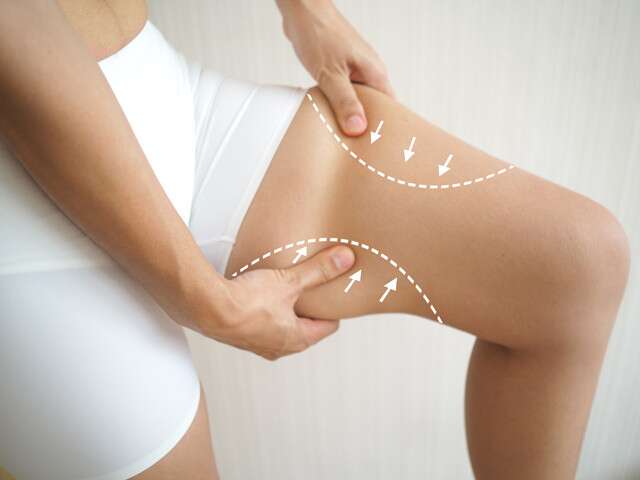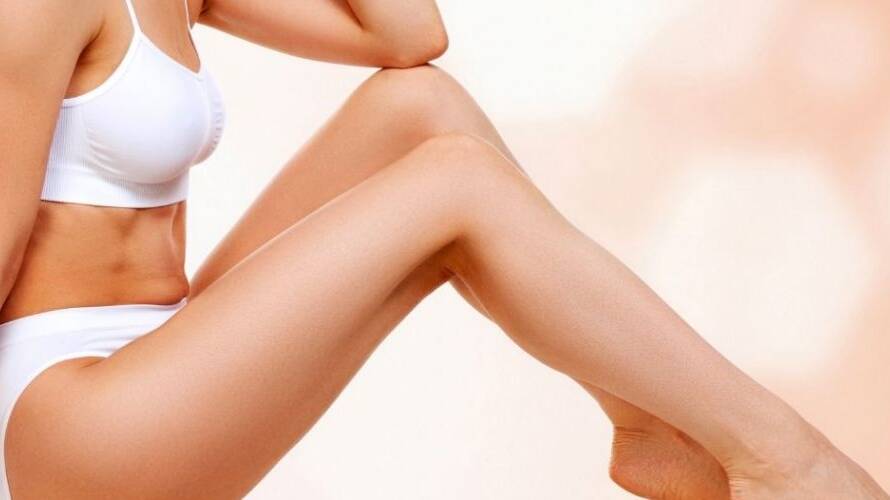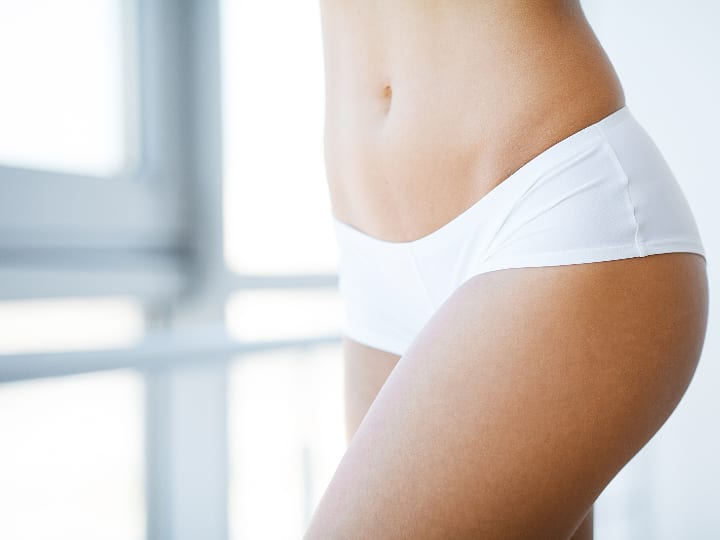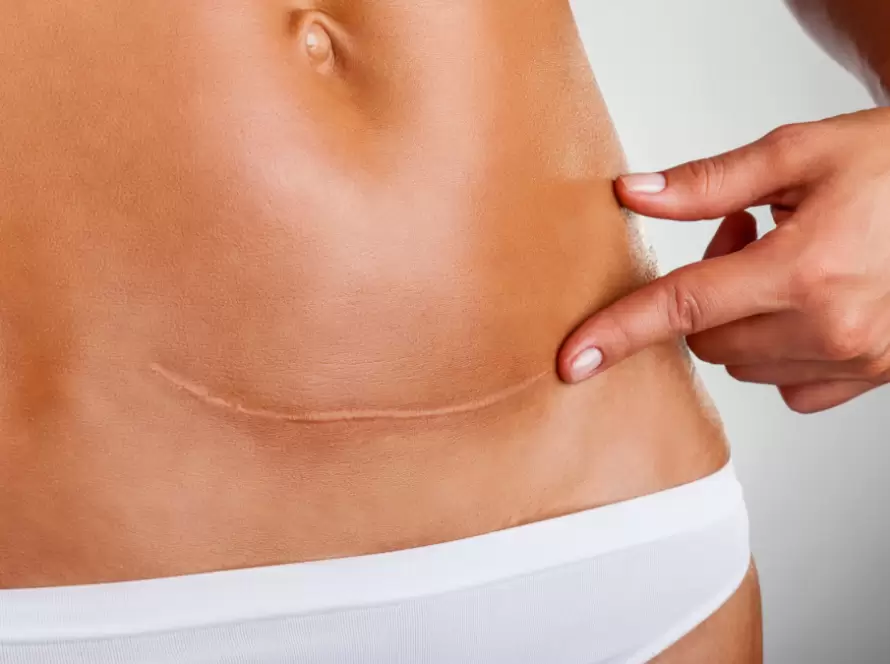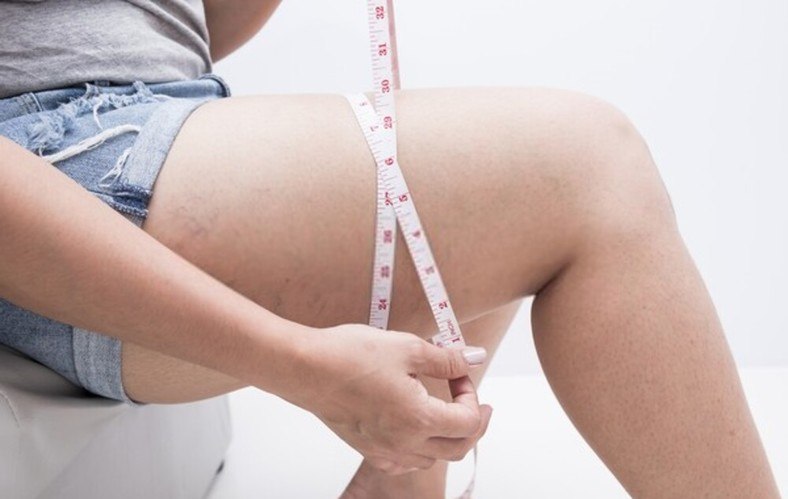The Science Behind Flabby Inner Thigh Pouches: Causes and Solutions
Flabby inner thigh pouches, or saggy inner thighs, can be a common concern for both men and women. These pockets of excess fat and loose skin can lead to self-consciousness and frustration. In this niche blog post, we will explore the scientific factors behind the development of flabby inner thigh pouches and discuss effective solutions. Genetics plays a significant role in determining how and where our bodies store fat. Some individuals may be genetically predisposed to accumulate fat in their inner thighs. Additionally, hormonal changes, especially in women during pregnancy, menstruation, and menopause, can influence fat distribution. Aging leads to decreased skin elasticity due to declining collagen and elastin production, contributing to saggy skin on the inner thighs.
Weight fluctuations, both gain and loss, can also impact the appearance of inner thighs. Significant weight gain can cause fat buildup, while rapid weight loss may result in loose skin. Weak inner thigh muscles can exacerbate the problem.
To address flabby inner thighs, focus on a balanced diet, regular exercise, and skincare practices. Targeted exercises, such as leg lifts and squats, can help tone inner thigh muscles. Maintaining a healthy lifestyle can improve inner thigh appearance and boost self-confidence.

Genetics and Body Fat Distribution
Genetics is a crucial factor in the way our bodies distribute and store fat. For some individuals, their genetic makeup predisposes them to accumulate excess fat in the inner thigh area. This inherent tendency can pose a challenge when striving for a slim and toned inner thigh region. It’s important to recognize that you cannot alter your genetic composition. However, understanding the role genetics plays can help you establish realistic expectations regarding your body shape.
Acknowledging your genetic predisposition can motivate you to focus on targeted strategies aimed at improving the appearance of your inner thighs. While you might not be able to completely change your genetic propensity to store fat in this area, you can adopt a holistic approach that includes a balanced diet, regular exercise, and skincare practices. These efforts can contribute to a more favorable inner thigh appearance, allowing you to feel more confident in your own skin while working with, rather than against, your genetic makeup.
Hormonal Changes
Hormonal fluctuations can influence fat storage and distribution in the body, including the inner thighs. Several key hormonal changes can contribute to the development of flabby inner thigh pouches:
Estrogen: Estrogen levels can affect fat storage. For women, fluctuations in estrogen during pregnancy, menstruation, and menopause can lead to changes in fat distribution, including the inner thigh area.
Testosterone: Menopausal women often experience a decrease in estrogen and an increase in testosterone, which can lead to fat redistribution and a loss of muscle mass, contributing to saggy inner thighs.
Cortisol: Elevated stress levels can lead to increased cortisol production, which is associated with fat storage, especially in the abdominal and thigh areas.
Aging and Skin Elasticity
Aging is an inevitable process that brings about a reduction in skin elasticity, primarily due to a decline in collagen and elastin production. This natural phenomenon can result in saggy skin, affecting various parts of the body, including the inner thighs. Several key factors contribute to the diminishing skin elasticity associated with aging:
Collagen Production: Collagen is a fundamental protein responsible for maintaining skin’s firmness and elasticity. Unfortunately, as we age, our bodies produce less collagen, leading to a gradual loss of skin tightness. This collagen decline can manifest as sagging skin, including on the inner thighs.
Sun Exposure: Excessive exposure to ultraviolet (UV) radiation from the sun or tanning beds can expedite the breakdown of collagen fibers. This accelerated collagen degradation can lead to premature skin aging, making it more susceptible to sagging and loss of elasticity.
Weight Fluctuations: Frequent weight fluctuations, especially substantial weight loss, can cause the skin to stretch and then struggle to rebound. This stretching and subsequent lack of support can result in sagging skin, affecting not only the abdominal area but also the inner thighs.
Weight Gain and Loss
Weight fluctuations, both gain and loss, can significantly impact the appearance of your inner thighs. Understanding the relationship between your body’s weight changes and your inner thigh condition is crucial.
Weight Gain: Significant weight gain can lead to fat accumulation in the inner thigh area. As excess fat is stored, the skin stretches to accommodate it. However, when this weight gain is rapid or excessive, the skin may struggle to adapt, resulting in saggy inner thighs. The skin’s elasticity can become compromised, and it may not fully retract even if you later lose the weight.
Weight Loss: On the flip side, rapid weight loss can also lead to saggy inner thighs. As you shed pounds, the volume of fat beneath the skin decreases. The skin, which has stretched to accommodate the previous fat volume, may not immediately tighten back to its original state. This can result in loose skin and contribute to the appearance of flabby inner thighs.
Lack of Muscle Tone
Weak muscles in the inner thigh area can contribute to the appearance of flabbiness. Targeted muscle exercises can help tighten and tone the inner thigh muscles. Effective exercises include:
Inner Thigh Leg Lifts: Lying on your side and lifting your top leg as high as possible can engage and strengthen the inner thigh muscles.
Squats: Squats work the muscles in the thighs and can help improve overall leg tone.
Lunges: Lunges engage both inner and outer thigh muscles, contributing to a more sculpted appearance.
Cardiovascular Exercise: Engaging in regular cardiovascular activities like running or cycling can help reduce overall body fat, including in the inner thigh area.
Diet and Nutrition
Your dietary choices play a pivotal role in maintaining a healthy body composition and preventing the development of flabby inner thighs. To promote inner thigh health and overall well-being, consider these dietary tips:
Prioritize a diet that is abundant in fruits, vegetables, lean proteins, whole grains, and healthy fats. These nutrient-dense foods provide essential vitamins, minerals, and antioxidants, supporting overall health while aiding in weight management.
Practice mindful eating by paying attention to portion sizes. Overeating can lead to excess calorie intake, potentially resulting in weight gain and fat accumulation, including in the inner thigh area.
Staying adequately hydrated is key. Drinking enough water not only supports overall health but also helps control appetite. Sometimes, thirst is mistaken for hunger, leading to unnecessary calorie consumption.
Minimize your intake of foods and beverages high in added sugars and unhealthy fats. These items can contribute to weight gain and fat storage, which can be particularly problematic for the inner thighs.
Conclusion
Flabby inner thigh pouches can result from a combination of genetic predisposition, hormonal changes, aging, weight fluctuations, muscle tone, and dietary factors. While you may not have control over some of these factors, you can take proactive steps to improve the appearance of your inner thighs.
Understanding the scientific causes behind flabby inner thighs can help you develop a personalized approach to address this concern. Embrace a healthy lifestyle that includes a balanced diet, regular exercise, and skincare practices to maintain or regain confidence in your inner thigh appearance. Remember that achieving optimal inner thigh tone is a gradual process, and patience and consistency are key to seeing results.




